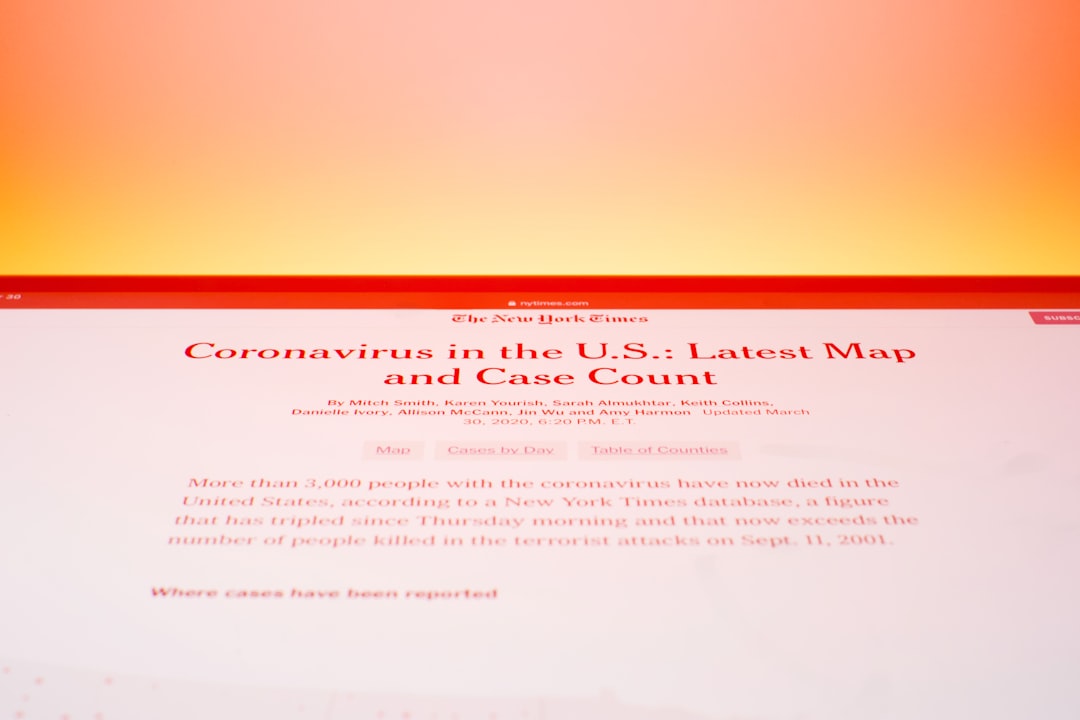AI Safety Insights: A Path to a Healthier Future
Explore the US Government’s unpublished AI safety report. Discover insights for a healthier future. Dive into the future of AI safety today.
Introduction to the Unpublished AI Safety Report
Background and Purpose
The unpublished AI safety report, commissioned by the US government, delves into the potential risks and challenges posed by artificial intelligence technologies. As AI systems become increasingly integrated into various sectors, there is a pressing need to address safety concerns to ensure these technologies are developed and deployed responsibly.
The report aims to provide a comprehensive overview of the current state of AI safety, identify potential risks, and propose guidelines for mitigating these risks effectively.
Key Areas of Focus
The report highlights several critical areas that require attention to enhance AI safety. These include algorithmic transparency, data privacy, and the ethical implications of AI decision-making processes.
By examining these areas, the report seeks to outline strategies that can be implemented to safeguard against unintended consequences and ensure that AI systems operate within ethical and legal boundaries.
Challenges in AI Safety
One of the primary challenges identified in the report is the lack of standardized regulations governing AI technologies. This absence of a unified framework makes it difficult to enforce safety protocols consistently across different industries and applications.
Additionally, the rapid pace of AI development often outstrips the ability of regulatory bodies to keep up, leading to potential gaps in oversight and accountability.
Recommendations for Policy Makers
To address these challenges, the report offers several recommendations for policymakers. These include the establishment of a dedicated AI safety regulatory body, the development of international standards for AI governance, and increased funding for research into AI safety measures.
By implementing these recommendations, the report suggests that it is possible to create a safer environment for AI innovation while minimizing risks to society.
Conclusion of Findings
While the report remains unpublished, its findings underscore the importance of proactive measures in AI safety. By focusing on transparency, accountability, and ethical considerations, the US government aims to set a precedent for responsible AI development.
The insights provided in the report serve as a crucial step towards understanding and mitigating the risks associated with the rapid advancement of AI technologies.
Key Findings and Recommendations
Inadequate Regulatory Framework
The unpublished report highlights a significant gap in the current regulatory framework governing AI technologies. Existing laws and guidelines are insufficient to address the rapid advancements and unique challenges posed by AI systems.
The report stresses the need for a comprehensive overhaul of regulations to ensure they are robust and adaptable to future developments.
Bias and Fairness Concerns
Another critical finding is the prevalence of bias in AI algorithms, which can lead to unfair outcomes in various applications, from hiring processes to law enforcement. The report recommends implementing rigorous testing and validation procedures to identify and mitigate biases in AI systems.
Additionally, it suggests fostering diversity in AI development teams to bring varied perspectives and reduce inherent biases.
Transparency and Accountability
The report underscores the importance of transparency in AI systems, advocating for clear documentation and explainability of AI decision-making processes. This transparency is crucial for building public trust and ensuring accountability.
The report recommends establishing standards for AI transparency and creating mechanisms for auditing AI systems to ensure compliance.
Investment in AI Research and Development
The report identifies a need for increased investment in AI research and development to maintain global competitiveness and drive innovation. It suggests prioritizing funding for projects that focus on AI safety and ethical considerations.
Collaborative efforts between government, academia, and industry are encouraged to foster a holistic approach to AI advancement.
Public Awareness and Education
Raising public awareness about AI technologies and their implications is another key recommendation. The report suggests launching educational initiatives to inform citizens about the benefits and risks associated with AI.
This includes integrating AI literacy into educational curricula and providing resources for lifelong learning to help individuals navigate an increasingly AI-driven world.
Implications for Future AI Development
Enhanced Regulatory Frameworks
The unpublished report highlights the necessity for more robust regulatory frameworks to manage AI technologies. As AI systems become increasingly sophisticated, there is a pressing need for regulations that ensure these technologies are developed and deployed safely.
This involves setting standards for transparency, accountability, and ethical considerations in AI development.
Regulatory bodies may need to collaborate with AI developers to create guidelines that balance innovation with safety, ensuring that AI technologies do not pose unintended risks to society. This could lead to the establishment of new governmental agencies dedicated to overseeing AI safety and compliance.
Focus on Ethical AI
The report underscores the importance of embedding ethical considerations into AI development processes.
Future AI systems should be designed with a focus on fairness, privacy, and non-discrimination to prevent biases and protect individual rights. This requires AI developers to incorporate ethical guidelines from the outset of the development process.
Moreover, there is a call for increased interdisciplinary research to better understand the social implications of AI technologies.
This could involve collaborations between technologists, ethicists, and social scientists to ensure that AI systems align with societal values and norms.
Investment in AI Safety Research
To address potential risks associated with AI, the report advocates for increased investment in AI safety research. This includes funding for projects that aim to develop fail-safe mechanisms and improve the interpretability of AI models.
By prioritizing safety research, developers can create AI systems that are not only powerful but also secure and reliable.
Government and private sector partnerships may be crucial in advancing this research. Collaborative efforts could lead to the development of innovative solutions that enhance the safety and robustness of AI technologies, mitigating potential threats before they arise.
International Cooperation
The report suggests that international cooperation is vital for addressing the global implications of AI development.
As AI technologies transcend national borders, there is a need for international agreements and standards to ensure consistent safety practices worldwide.
Countries may need to work together to share knowledge, resources, and best practices in AI safety. This could involve the formation of international coalitions or organizations dedicated to promoting safe AI development and preventing the misuse of AI technologies on a global scale.
Call to Action for Government and Industry
Strengthening Regulatory Frameworks
In light of the US Government’s unpublished report on AI safety, it is imperative for both government and industry to collaborate on strengthening regulatory frameworks.
Current regulations may not adequately address the rapid advancements in AI technologies. A comprehensive review and update of these frameworks are essential to ensure that AI systems are developed and deployed safely and ethically.
Governments should work closely with industry leaders to establish clear guidelines and standards that prioritize public safety and ethical considerations.
This collaboration can help in creating a balanced approach that fosters innovation while mitigating potential risks associated with AI technologies.
Promoting Transparency and Accountability
Transparency and accountability are crucial in building public trust in AI systems. The report highlights the need for both government and industry to adopt practices that promote openness in AI development processes.
This includes disclosing methodologies, data sources, and decision-making criteria used in AI systems.
Industry players should be encouraged to implement robust accountability measures that ensure AI systems operate as intended and can be audited for compliance with established standards. Governments can support these efforts by developing policies that incentivize transparency and penalize non-compliance.
Investing in Research and Development
To stay ahead of potential risks, there is a pressing need for increased investment in AI research and development.
The report calls for government and industry to allocate resources towards exploring innovative solutions that enhance AI safety and reliability.
Joint initiatives between public and private sectors can accelerate advancements in AI safety research. By pooling resources and expertise, these collaborations can lead to breakthroughs that address current challenges and anticipate future risks associated with AI technologies.
Enhancing Public Awareness and Education
Raising public awareness and understanding of AI technologies is essential for fostering an informed society that can engage with AI developments critically.
The report emphasizes the role of government and industry in enhancing educational initiatives that demystify AI and its implications.
Educational programs and public campaigns can help demystify AI technologies, making them more accessible to the general public. By promoting digital literacy and critical thinking, these efforts can empower individuals to make informed decisions about AI usage in their personal and professional lives.
FAQ
Q1: What are the main concerns regarding AI safety in the health and lifestyle sectors according to the unpublished report?
A1: The unpublished report highlights several concerns about AI safety in health and lifestyle, primarily focusing on data privacy, algorithmic bias, and the reliability of AI systems. In the health sector, there are worries about AI misdiagnoses or errors in treatment recommendations due to biased data or flawed algorithms. In lifestyle applications, the report raises issues about the potential misuse of personal data and the ethical implications of AI-driven decisions that could affect individual well-being and lifestyle choices.
Q2: When can we expect the results and findings of the AI safety report to be implemented in these sectors?
A2: The timeline for implementing the findings from the AI safety report in health and lifestyle sectors is not explicitly defined in the unpublished document. However, it suggests a phased approach, starting with pilot programs and stakeholder consultations to address the most pressing safety concerns. This could take several months to a few years, depending on the complexity of the issues and the level of coordination required among government agencies, healthcare providers, and tech companies.
Q3: What implementation challenges does the report identify for ensuring AI safety in these sectors?
A3: The report identifies several implementation challenges, including the need for standardized regulations and guidelines to ensure AI systems are safe and effective. It also points out the difficulty in achieving interoperability between different AI systems and existing healthcare or lifestyle platforms. Additionally, there is a challenge in ensuring that AI systems are transparent and explainable, so users can trust the decisions made by these technologies. Overcoming these challenges requires collaboration among policymakers, industry leaders, and technical experts to develop robust safety frameworks and protocols.
Takeaway
“Ready to boost your well-being with a simple change? Start today by incorporating a 10-minute daily walk into your routine. Share this article with friends who could benefit too, and dive deeper into evidence-based health tips from WHO or other trusted resources. Your health journey begins with small steps – take the first one now!” This move is widely interpreted as a strategic response to recent challenges.











Comments